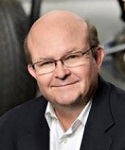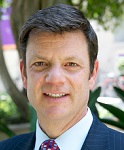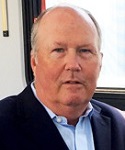
Electric Transportation of Goods and People and the resulting impact on Energy Infrastructure

Virtual Conference
REGISTER HERE
UCLA Event
The COVID-19 pandemic has changed how we live, work, and travel. Delivery of food and packages to our homes by companies such as Amazon is becoming the norm as increasingly larger numbers of employees work from home. Many of these delivery companies are now electrifying their fleets. Simultaneously, a reduction in the number of vehicles on the road during this pandemic has demonstrated that a future with reduced tailpipe emissions would result in all of us breathing cleaner air – a further reason to move towards zero-emission vehicles (ZEVs) which today are mostly electric. Enabling sufficient numbers of electric vehicles (EVs) so as to make a significant impact on emissions requires large scale deployment of smart and modern EV charging infrastructure that is easy to use, efficient, economical, and does not stress the grid.
On September 15, 2020, UCLA Smart Grid Energy Research Center (SMERC) and UCLA Connected Autonomous Electric Vehicle (CAEV) Program within the UCLA Samueli School of Engineering are hosting a Global Conference bringing leaders from 3 continents – North America, Europe, and Asia – together to discuss the role of EVs and how the world is putting together smart charging infrastructure to support the anticipated growth in EVs worldwide.
EV development worldwide
The EV Industry, which California pioneered, is experiencing significant growth throughout the world with rapid advances in technology, performance, and a steep reduction in cost. EV industry pioneer that started in California, Tesla, has expanded its EV footprint globally, adding factories in China and Germany. With costs falling, incumbents have rapidly entered the market and added EVs to their product mix for the mass market. Volkswagen, the world’s largest automotive manufacturer, has announced plans to launch EVs priced under $22,000. Ford, Honda, VW, and BMW recently agreed to cut emissions and promised to deliver car fleets averaging 50 miles per gallon by model year 2026. The market is reacting positively to such developments, and Bloomberg New Energy Finance estimates that by 2022 the world will have 500 EV models with an estimated 26 million EVs sold in 2030 representing 28% of total vehicles sold in that year.
EV market expands from passenger cars to commercial vehicles
While passenger cars represent a significant portion of the current EV marketplace, commercial vehicles are experiencing rapid conversion to electric, especially because the cost to own and operate EVs is reducing. First, battery cost has come down by about 87% in the past decade thereby reducing the purchase cost of the EV. Second, the energy cost per mile to operate a vehicle using electric power as compared to fossil fuel-based energy is about half. Third, clean air incentives offered by governments make purchasing of electric trucks and buses extremely attractive financially. Fourth, mandates such as the recent ruling by California Air Resources Board (CARB) requiring all commercial trucks and vans sold in California in 2045 as well as half of all trucks sold by 2035 to be ZEVs, creates a market for electrification. Therefore, analyst firms are predicting significant growth of this market – electric trucks growing at a compound annual growth rate of 53.8% from 2021 to 2026.
Electric Trucks
This anticipated hyper-growth market is fueled by investments as well as the creation of new technologies. Electric truck manufacturer, Rivian, backed by the likes of Amazon and Ford, for example, has raised about $6B billion and is focused on good delivery. XOS, a startup here in Los Angeles, is bringing new electric truck technology to the marketplace. Others include Arrival, Chanje, Workhorse, and CityFreighter. Incumbents such as Daimler and Volvo, are also coming out with electric trucks, thereby augmenting an expanding and competitive marketplace.
Electric Buses
Bus electrification is also expanding rapidly in the marketplace with manufacturers such as Proterra of California and BYD of China that started out as pure electric vehicle manufacturers, where others such as Solaris of Europe, and Newflyer of the United States have transitioned into electric as they see policymakers such as CARB setting sustainability targets for emissions reduction.
New programs and policies
EV innovation is being driven by new policies from around the world such as the London Smart Cities Initiative for the urban delivery of goods and people. The London city government announced last year that it is declaring an Ultra Low Emission Zone (ULEZ) within a certain region of the city that will have tighter emissions standards. Vehicles exceeding certain threshold emissions levels would need to pay a charge to enter these zones. Los Angeles and Santa Monica in California are similarly looking at emissions-free delivery zones.
Smart charging to support a smart grid including aggressive renewable portfolio standards
While electricity as a source of energy for transportation reduces greenhouse gas emissions, it also challenges the grid in the short term especially if EV charging is not managed properly. If managed via smart charging, especially using software that understands energy management, driver behavior, and battery technology, utilization of the existing grid capacity can be maximized while avoiding stressing the grid. The grid operators can benefit by utilizing the batteries within EVs as energy storage devices to stabilize their grid as they ramp up their renewable energy portfolio, which for California, a world leader in renewables, is 100% by 2045. For example, increasing amounts of solar PV generation results in the “duck curve”, a phenomenon that creates excessive power and negative pricing of electricity during the middle of the day, but by increasing the number of EVs, this energy may be absorbed thereby providing stability to the electric grid.
Additionally, EV fleet operators such as bus transit agencies whose vehicles tend to utilize large amounts of electricity, are installing stationary battery storage, so that they don’t have to rely completely on the grid operator to install power lines, especially when they supplement their facilities with rooftop PV. Such solar+battery+EV facilities can be efficiently controlled by microgrid technologies that manage these so-called “Distributed Energy Resources” or DERs thereby making it easier for grid operators to manage such assets.
AV+EV
Most EV manufacturers are simultaneously investigating autonomous vehicle (AV) technologies so that they can be at the forefront of the transportation revolution. The intersection of AV with EV creates challenges and opportunities, an example of which is the need to refuel an Autonomous Electric Vehicle (AEV) with no driver present. Wireless EV charging and robotic-assisted automated charging are being actively explored as potential solutions.
Smart Cities
As city infrastructure gets modernized, and as streets become “smart” via sensors, digital street signs, Internet-of-Things (IoT) technology, or GIS, the job of the AEV technology to deliver personnel and goods would become easier and quicker, while reducing street traffic and minimizing energy needs of the delivery fleet. Companies such as Waymo, Argo, Aurora, Cruise, Tesla, Uber, Pony.AI, and others are innovating in this space rapidly.
Infrastructure for Electric Transportation and its Energy
To discuss the technologies, innovations, challenges, and opportunities pertaining to infrastructure to support the electrification of transportation, we are bringing together experts from different disciplines at our upcoming Conference on September 15, 2020.
Tentative agenda
8 a.m. – 10 a.m. Sessions with Speakers from EUROPE
10 a.m. – 1 p.m. Sessions with Speakers from USA
1 p.m. – 2 p.m. Lunch Break
2 p.m. – 5 p.m. Sessions with Speakers from USA
5 p.m. – 7 p.m. Sessions with Speakers from ASIA
All times are PDT or Pacific Daylight Time (GMT-7) |
















